The Surprisingly Early History of Christianity in India
Modern Syrian Christians of Kerala believe that the Apostle Thomas visited in A.D. 52 to baptize their ancestors
:focal(1009x819:1010x820)/https://tf-cmsv2-smithsonianmag-media.s3.amazonaws.com/filer/9e/86/9e86f720-5ed7-4c6f-aa6d-a3c9e7cea18c/sqj_1601_india_kerala_05.jpg)
The first hat I ever saw was worn by Father Lawrence, an elderly priest who said Mass for the rubber-plantation workers in the Kerala village where I spent a Catholic childhood. When he came to our house for coffee, he lifted the curiously rounded hat and bowed with grave courtesy, a gesture I remember vividly because we did not know of such things then. Years later I would learn that it was a pith helmet.
We got to know Father Lawrence because attending his ramshackle chapel near our family farm was far easier than enduring the hilly, one-hour walk to our parish church. The traditional-minded in our parish frowned upon this because the plantation church followed the Latin rite, not the Syrian rite, although both are Catholic. As for us children, none of this mattered in the least. At the plantation church, we squatted on the mud floor brushed smooth with cow-dung paste and tormented ant lions in their tiny pits scratched into the earth. When we attended the parish church, we risked a caning to sneak into the downhill cemetery and peer into the “well,” in which unearthed bones and skulls from old graves had been unceremoniously dumped.
Of course we had no way of knowing then that the Latin rite had come to Kerala by way of the 16th-century Portuguese or that the Syriac rite had come far earlier, in the centuries just following Christ’s birth. Therein hangs a tale of the spices—pepper, cardamom, cinnamon—that made Kerala a hot spot in the ancient world, a story that helps explain how Christianity came to India not once but twice.
The state of Kerala is India’s Down Under, a narrow strip of land overlooking the southern tip of the subcontinent that is monsoon driven; sun drenched; humid; lush green; full of rivers, streams, lakes, backwaters, coconut trees; and teeming with people. The Arabian Sea’s white beaches fringe Kerala to the west, while the Western Ghats, with their impenetrable tropical forests and eternities of grasslands, define its eastern boundary. The distance from the sea east across the state’s midsection—a water world of backwaters merging into the rubber tree-filled farms—to the tea and cardamom plantations of the hills, averages only between 20 and 75 miles. Few areas in the world boast more ideal growing conditions for spices. Long before Jesus’ time Jews, Arabs and other ancient maritime traders settled in Kerala to buy, trade and store spices.
Modern Syrian Christians of Kerala (the majority Christian population here) believe that the Apostle Thomas—the one who so famously questioned Jesus—visited here in a.d. 52 and baptized their forefathers. Historians surmise that the diverse, rich trading center of Kerala may well have drawn this Palestinian Jew of the Roman Empire who wished to preach the Gospel. Thousands of churches today bear his name, their rituals and theology derived from Eastern Orthodox traditions in the liturgical language Syriac, a formation of Aramaic, the dialect Jesus—and Thomas—spoke. For decades now, the liturgical language of Kerala Christians has been Malayalam, the language of Kerala. Thomas’s name remains ubiquitous in Kerala, appearing on everything from baptism registers and the neon signs of jewelry stores and bakeries to the nameplates of dental surgeons and real estate developers’ ads. During the negotiations surrounding arranged marriages, it’s common for both families to make discreet inquiries as to whether the other’s ancestries reach back to the Apostle. A “yes” can prove a big plus—apart from the quantum of dowry, of course.
Then, in 1498, the famous Portuguese explorer Vasco da Gama sailed to Kerala to open up the first Europe-India sea route. Imagine his surprise when he found Christians. Two years later, Captain Pedro Álvares Cabral followed, bringing eight Franciscan priests, eight chaplains and a chaplain major. He left a few behind, who introduced the Latin—read Roman Catholic—rite. Once European Christianity had arrived, life was never the same again for Kerala Christians. The community would be split, re-split, changed, reformed and reinvented. But looking back, it seems clear that through the vicissitudes of history the community was moving ahead, not stumbling.
**********
At Sabarimala, situated deep in the Western Ghats mountains of Kerala, sits the renowned forest temple of the Hindu god Ayyappa, a sacred pilgrimage site. Each night Ayyappa is sung to sleep with a sonorous and stately lullaby by the legendary Kerala singer Yesudas, a Christian whose name means “the servant of Jesus.” This is only one example of how Christianity has merged indistinguishably into Kerala’s—and India’s—rainbow of cultures. So, too, popular Hindu and Muslim artists created many Christian hymns beloved of church choirs.
The church spire is as much a part of the landscape as the temple tower and the mosque’s minaret. Although Christians constitute only 18.4 percent of Kerala’s 34 million population, they remain a prominent presence in all sectors of social, political and economic endeavor. The worldwide Kerala Christian diaspora is prosperous and strong. And the churches have been in the forefront of institution-building and in that sense a modernizing partner of Kerala society.
Up from Pala, a very Christian town with a famous temple right behind the bishop’s mansion, through Erattupetta, a very Muslim town with a celebrated church right in the middle of it, and at the end of a winding road into the hills of Western Ghats, with lovely vistas and many hairpin bends, a visitor reaches the Kurisumala Ashram (monastery), a place of serenity and beauty. The only sounds are cowbells jingling and the wind blowing over the grasslands. Occasionally a mist shrouds the meditation center. While the ashram doesn’t encourage visitors, it’s still worth a try. The Cistercian monk Francis Mahieu from Belgium and Bede Griffiths, a Benedictine from England, founded it in 1958 under the auspices of the Syro-Malankara Catholic Church. It is a rich destination for those seeking a contemporary blend of Hindu and Christian spiritualities.
The real showpieces of Kerala Christianity are its heritage churches, which express a fascinating mix of hoary history and contemporary faith. The 18th-century St. Thomas Cathedral at Pala, situated on the bank of the River Meenachil, about 40 miles southeast of Kochi, is a fine example of colonial church architecture, including a magnificent wood-carved altar in golden colors. However, both believers and church leadership seem to favor new flamboyant megastructures that exude power, and many of the heritage churches have been torn down. Some old ones, such as the exquisite twin churches of Ramapuram, which are 500 and 150 years old respectively, cling precariously to life. The local parish maintains that they are dangerously unsound and should be demolished, while a group of parishioners has received heritage status for the buildings and secured a court ruling that the churches are safe to use.
Kerala’s mainstream Christians unabashedly love the pomp and paraphernalia of ritual. A gathering of Kerala bishops dressed in the rainbow-hued grandeur of the Eastern Church, holding regal symbols of heavenly and earthly authority and seated on ornate thrones, brings a medieval court to mind. In some sects, the patriarch is buried while seated on his throne, attired in the dazzling glitter of episcopal robes. More often than not, the burial is preceded by a procession through the
patriarch’s city so that he may cast one last glimpse on his flock and they on him. For Kerala Christians, the church remains at the heart of their gregarious lifestyle, a place to recall the spirit in the hurly-burly of life. It is also an intensely experienced way of life for many.
A parish priest near Kottayam often finds senior citizens fast asleep on the church’s veranda at 4 a.m. Determined not to miss the 5:30 a.m. Mass, they set out from their homes at some vague hour after midnight. When they find the church door closed, they fall asleep waiting. For my aunt Annamma, who devoted one decade of the rosary every day for my becoming a good Christian, the church was like home. In her last days—she died at 87 recently—she would finish at the confessional, then turn around to ask her son in a loud whisper if she had missed any sin, much to the amusement of others, for her memory remained perfect. The priest would smile and reply that her confession would more than do. He would often add that she might save some for the next one!
Annual parish festivals still draw big crowds, many Christians abroad catching a flight back home to attend. Few are memorable or enriching, however, unless you like milling crowds and scary fireworks. Gone are the days of my childhood when we boys hefted a statue of St. Sebastian onto our shoulders and carried it along the maze of village footpaths at twilight. At each house we visited, the priest intoned the prayers in a quiet voice, the sacristan ringing his little bell at intervals. The smoke from the swinging incense burner wafted in the breeze. The Hindu homes welcomed us with lighted candles at their gates. St. Sebastian, shot through with arrows and pinned to a tree stump, showered his blessings on all as he chased away disease and sickness.
One of my most enduring childhood memories was the singing of the Kyrie at Father Lawrence’s Mass. As we assembled for the service, holes in the church’s palm-leaf-thatched roof admitted shafts of sunlight that danced upon us children. A young man served as a one-person choir, pumping the bellows of a harmonium with one hand, the fingers of the other running along the keys. Lawrence stood in front of the makeshift altar, an old wooden desk covered with a torn white sheet, murmuring the prayers. Then he started intoning Kyrie Eleison, its unfathomable melody piercing even our mischievous, bored hearts. The musician, whom we all liked, would pick up the chorus from the priest, his voice lifting us all, it seemed, to God’s doorstep, the keys of the harmonium rising and falling under his fingers and the bellows opening and folding in flowing rhythm. Although decades have passed, I still recapitulate the melody of the prayer, returning myself to those moments of magic. Only recently I found out that “Kyrie Eleison” means “Lord have mercy.” The words were Greek, not Latin, and predated Jesus himself by millennia.
Planning Your Next Trip?
Explore great travel deals
Smithsonian magazine participates in affiliate link advertising programs. If you purchase an item through these links, we receive a commission.
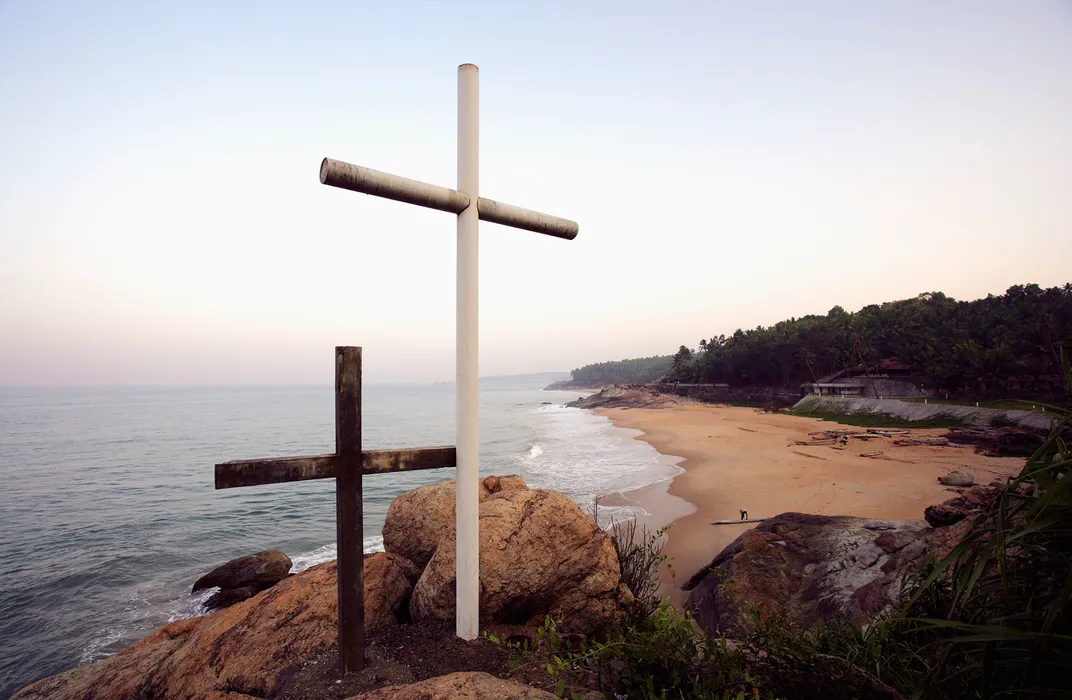
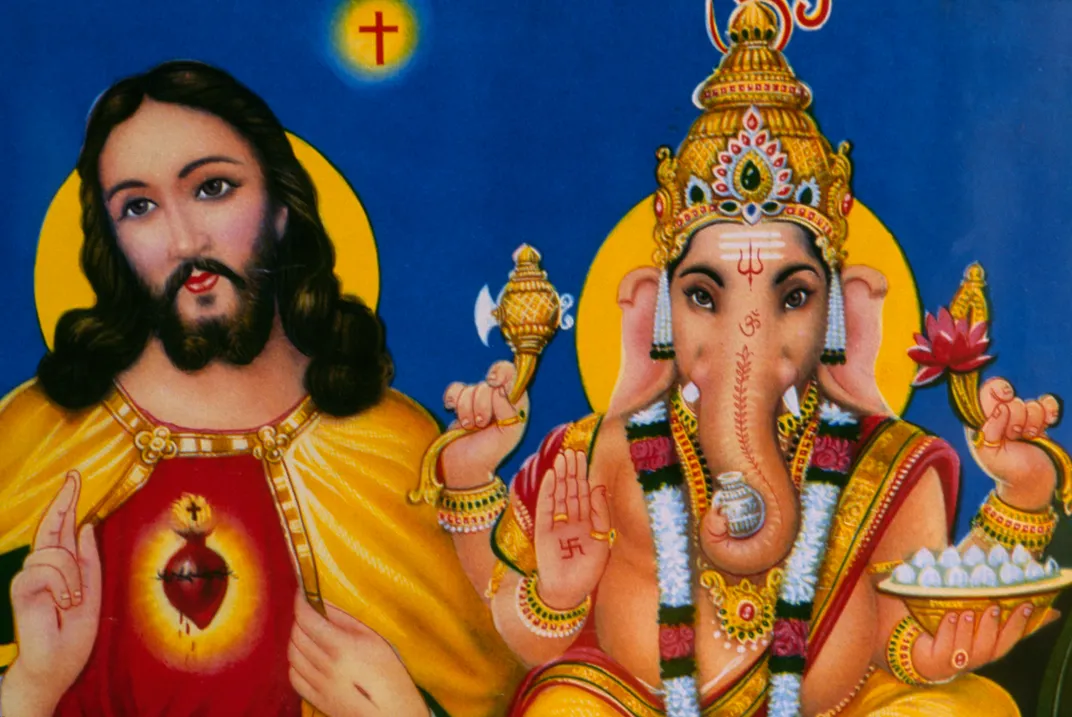
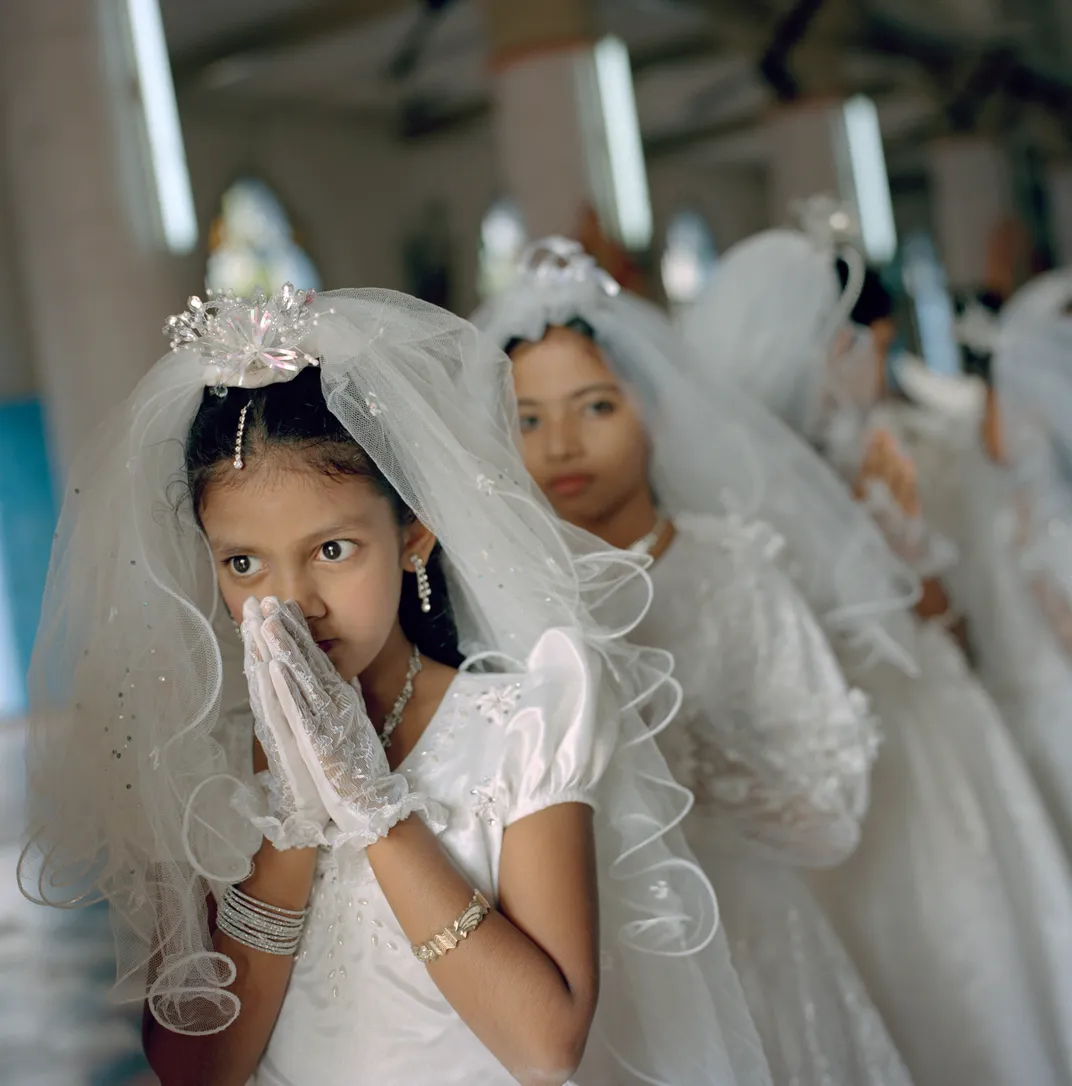
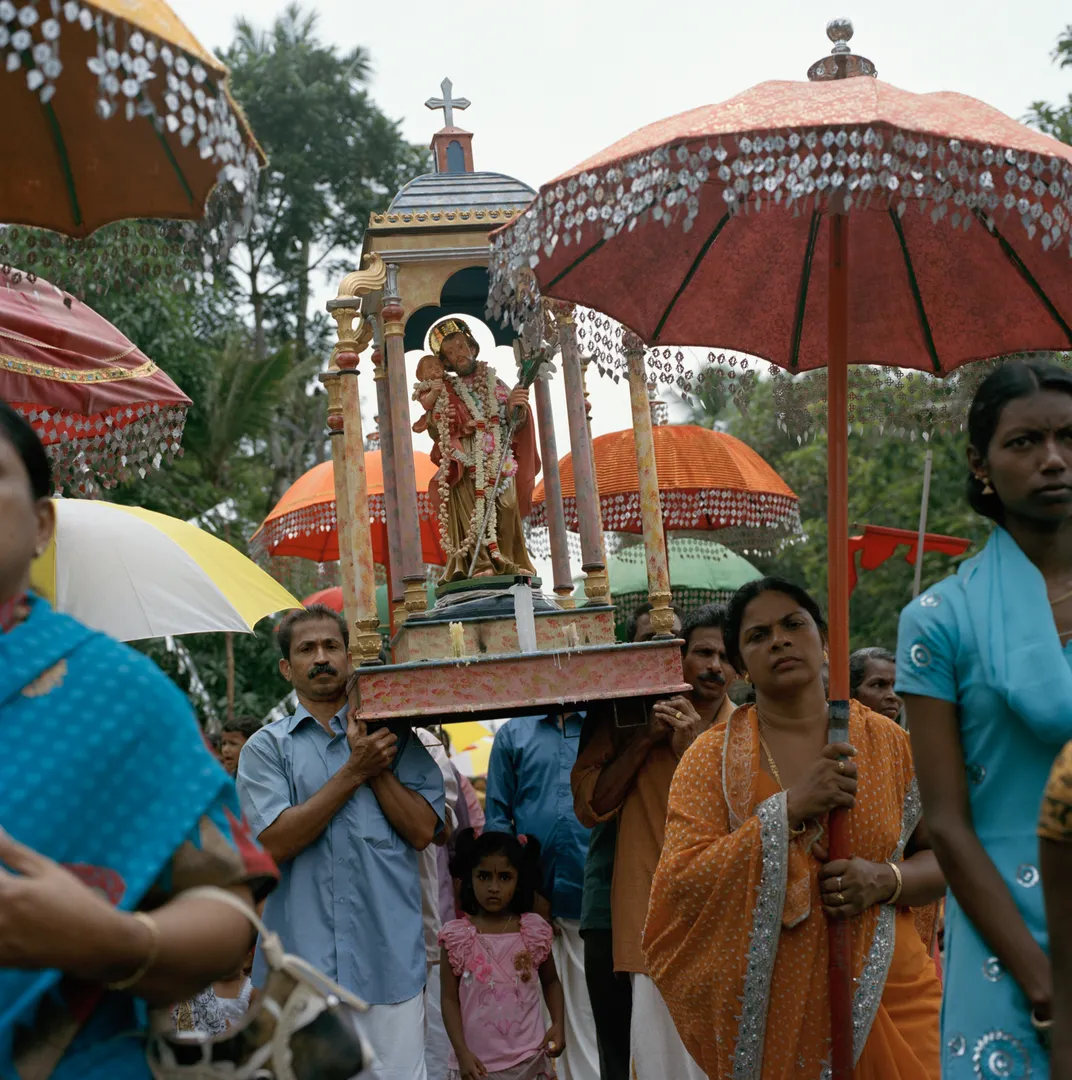
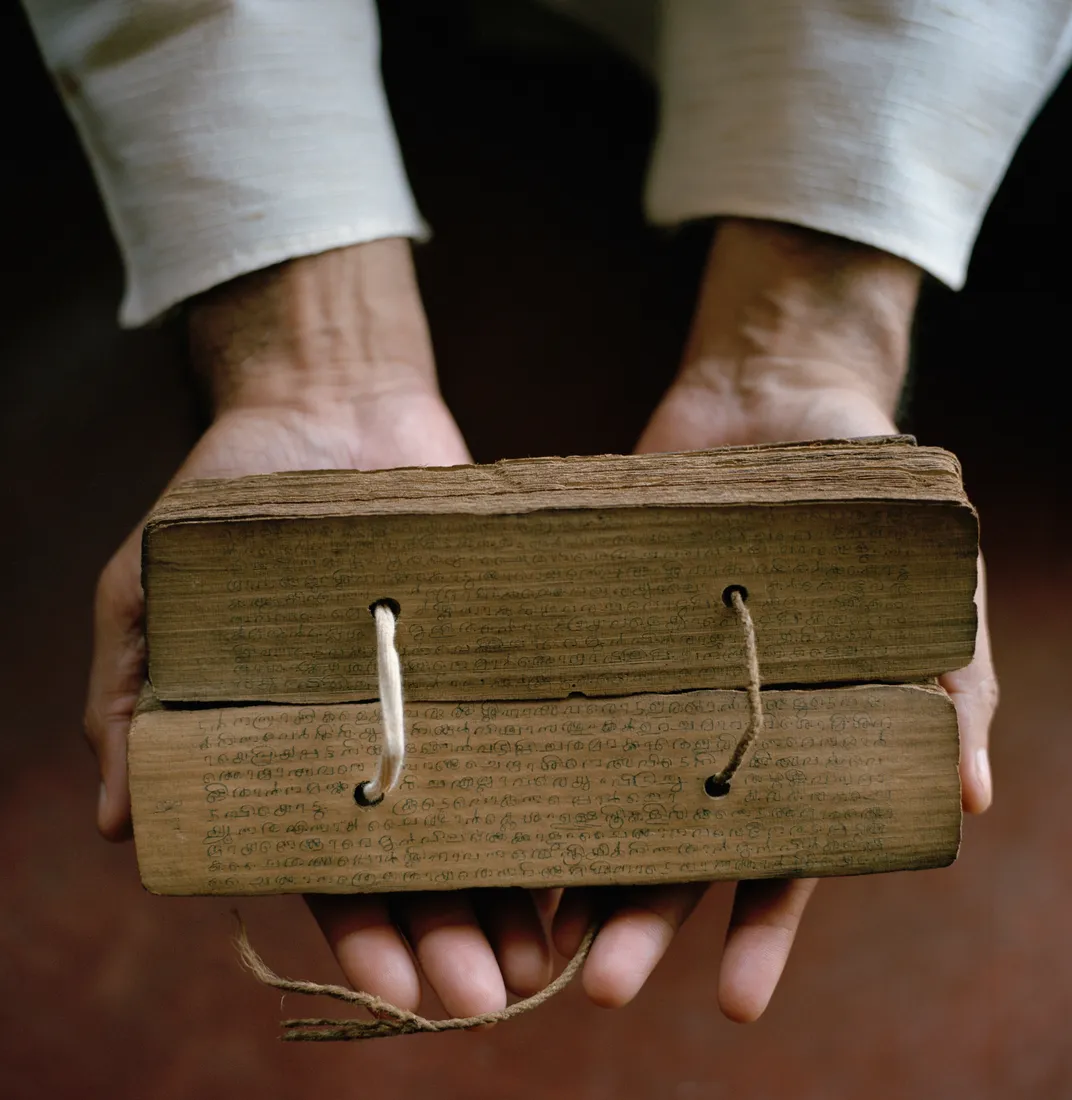
/https://tf-cmsv2-smithsonianmag-media.s3.amazonaws.com/accounts/headshot/SQJ_1601_India_Contrib_04.jpg)